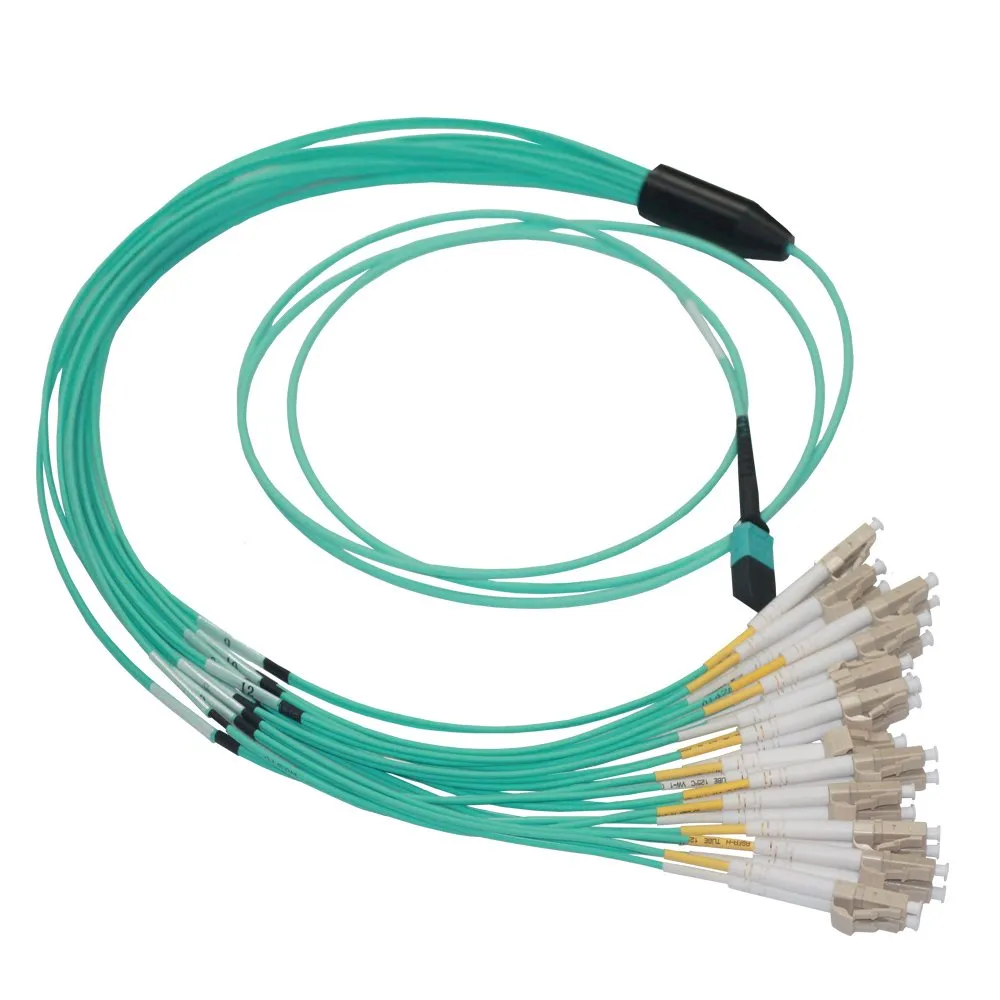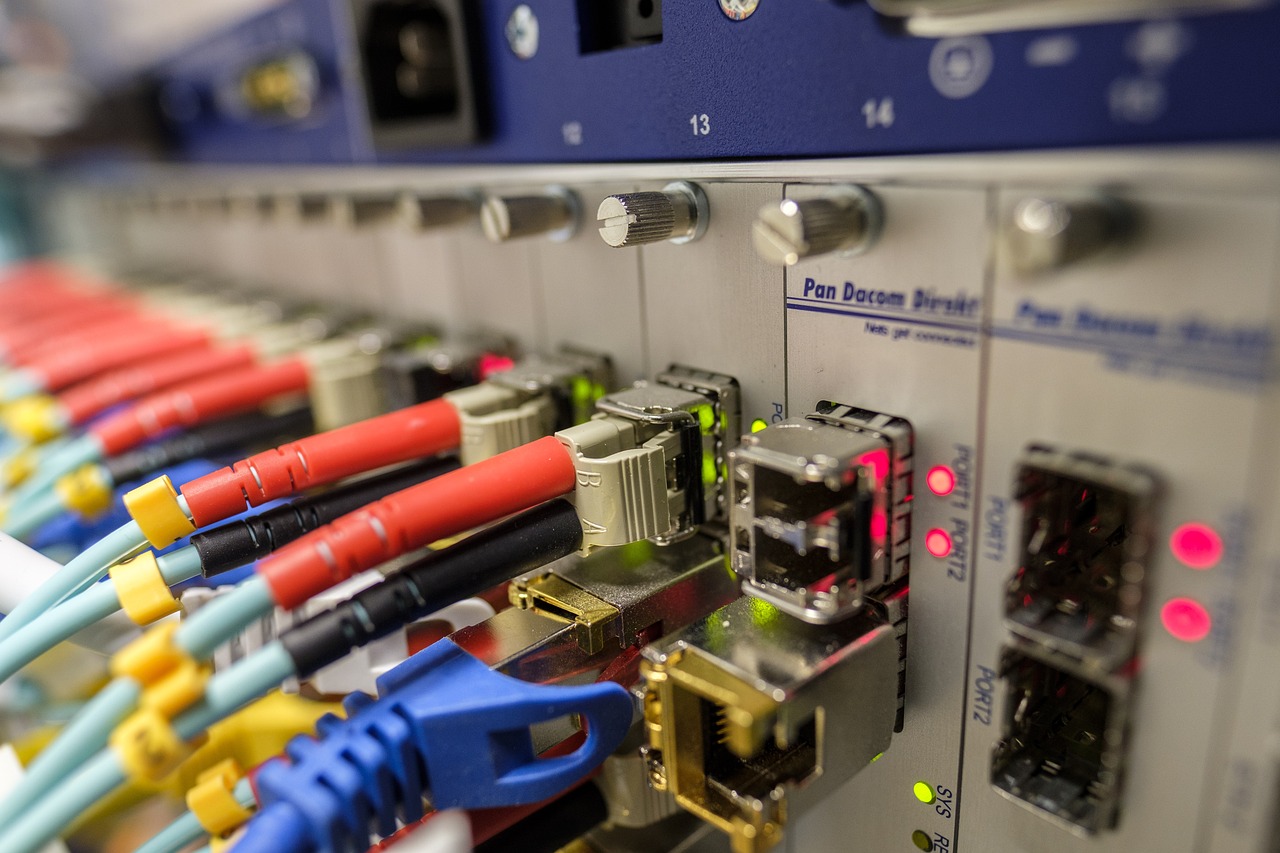5 Key Benefits of Using MTP/MPO Cables for High-Speed Data Transmission

Introduction to MTP/MPO Cables
In the world of high-speed data transmission, MTP/MPO cables play a crucial role. But what exactly are these cables, and why do they matter for high-speed data?
What Are MTP/MPO Cables?
When it comes to connectivity solutions, MTP/MPO cables are designed to meet the demands of high-density and high-speed networking. These cables consist of multiple fibers within a single connector, allowing for efficient and rapid data transmission.
Why They Matter for High-Speed Data
In today's fast-paced digital landscape, the need for speed has never been more critical. Whether it's in data centers, telecommunications networks, or enterprise environments, the demand for rapid and reliable data transmission is ever-present. This is where MTP/MPO cables shine, offering the necessary infrastructure to support high-speed data transfer and meet the escalating demands of modern connectivity requirements.
2. Maximizing Data Center Efficiency with 24 Cores
In the realm of high-speed data transmission, the power of MTP cables is further amplified by their ability to maximize data center efficiency through the utilization of 24 cores. Let's delve into the significance of these 24 cores and how they contribute to enhancing data center operations.
The Power of 24 Cores
With an impressive configuration of 24 cores, MTP cables facilitate the seamless transmission of vast amounts of data while occupying minimal physical space within data centers. This advanced design allows for more efficient use of resources, enabling data centers to handle substantial workloads without compromising on performance.
MTP's Contribution to Data Center Efficiency
The integration of MTP cables with 24 cores plays a pivotal role in optimizing data center efficiency. By harnessing the capabilities of these cables, data centers can effectively manage the increasing demands for high-speed data transmission and accommodate the burgeoning requirements for 100G connectivity. The compact nature and high-performance attributes of MTP cables ensure that data centers can operate at peak efficiency without being encumbered by space limitations or connectivity bottlenecks.
3. The Versatility of Multi-mode Fiber Optic Cables
In the realm of fiber optic connectivity, the choice between multi-mode and single-mode cables is a critical consideration for ensuring optimal network performance. Understanding the differences between these two options is essential when determining the most suitable cable for your specific requirements.
Multi-mode vs. Single-mode
When it comes to choosing the right fiber optic cable, the distinction between multi-mode and single-mode lies in their respective transmission capabilities. Multi-mode cables are designed to carry multiple light rays simultaneously, utilizing a larger core size that allows for various transmission paths. On the other hand, single-mode cables facilitate the transmission of a single ray of light, owing to their narrower core diameter.
Choosing the Right Cable for You
The decision to opt for multi-mode fiber optic cables is often driven by factors such as distance requirements, budget considerations, and compatibility with existing network infrastructure. Organizations seeking to cover shorter distances within their networks while maintaining cost-effectiveness may find multi-mode cables to be an ideal fit. Conversely, applications demanding extended reach and higher bandwidth may lean towards single-mode cables to fulfill their connectivity needs.
Why Multi-mode Is a Smart Choice
Embracing multi-mode fiber optic cables offers a myriad of benefits that cater to diverse networking demands, making it a strategic and versatile option for various scenarios.
The Benefits of Flexibility and Range
The inherent flexibility of multi-mode cables enables them to accommodate different network configurations and evolving connectivity requirements. Whether it's within enterprise environments or data centers, the adaptability of multi-mode cables ensures seamless integration with varying networking setups. Additionally, their ability to support a range of data rates makes them well-suited for applications where versatility and scalability are paramount.
5. Future-Proofing Your Network with MTP Technology
As technology continues to advance at a rapid pace, the importance of future-proofing your network infrastructure cannot be overstated. MTP technology offers a strategic approach to preparing for tomorrow's data needs and staying ahead in an ever-evolving digital landscape.
The Importance of Future-Proofing
Future-proofing your network involves proactively addressing the potential challenges and demands that may arise as technology progresses. By laying the groundwork for scalability, adaptability, and enhanced performance, organizations can position themselves to seamlessly integrate emerging technologies and meet escalating data requirements.
Preparing for Tomorrow's Data Needs
The exponential growth of data consumption necessitates a proactive approach to network planning. As businesses and industries embrace innovations such as IoT, AI, and Big Data, the demand for high-speed, reliable connectivity is set to soar. Embracing MTP technology enables organizations to future-proof their networks by establishing a robust foundation capable of accommodating the anticipated surge in data traffic.
How MTP Helps You Stay Ahead
Investing in MTP technology is akin to making a forward-looking investment in the longevity and adaptability of your network infrastructure. By harnessing the capabilities of MTP cables, organizations can position themselves at the forefront of technological advancements, ensuring that their networks are equipped to handle the demands of tomorrow.
Investing in the Future
The decision to integrate MTP technology represents a strategic investment in future-proofing your network. With its ability to support high-density connectivity, rapid data transmission, and seamless scalability, MTP paves the way for sustained relevance and competitiveness in an era defined by relentless technological innovation.
Conclusion: Reflecting on the Advantages
Summing Up the Benefits
As we conclude our exploration of MTP/MPO cables and their pivotal role in high-speed data transmission, it becomes evident that these cables offer a multitude of advantages that make them the right choice for modern connectivity needs.
Why MTP/MPO Cables Are the Right Choice
The versatility and efficiency of MTP technology position it as an indispensable asset for organizations seeking to optimize their data center operations and future-proof their networks. With its ability to support high-density connectivity and rapid data transmission, MTP cables emerge as a strategic investment in sustaining relevance and competitiveness amidst technological advancements. The seamless integration of 24 cores further enhances the appeal of MTP cables, enabling data centers to handle substantial workloads without compromising on performance.
In essence, embracing MTP/MPO cables equips organizations with the infrastructure needed to meet the escalating demands of high-speed data transmission while laying a robust foundation for future growth and innovation.
See Also
Benefits of MPO Fiber Optic Trunk Cables for Data Center
Contrasts of MTP versus LC/UPC Cables for 100G Data
Advantages of RoHS Compliant LC/UPC and SC/UPC Fiber Patch Cables


